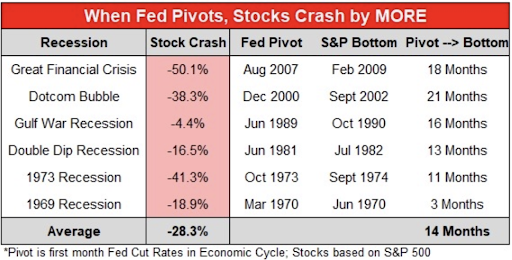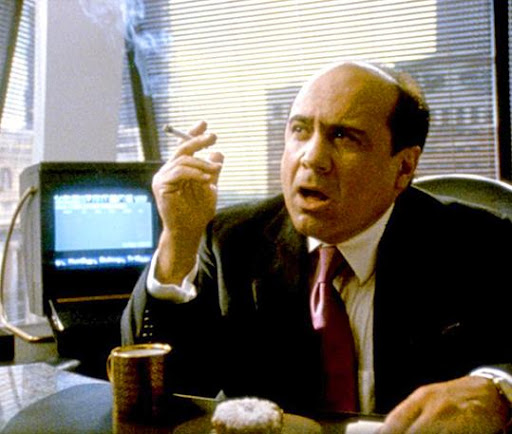Dear Reader,
Right now, the markets are under extreme pressure.
Energy stocks broke down first this afternoon. Now, I’m looking for biotech to sell… and then… the large banks. It could be a very ugly week for Bank of America (BAC), JPMorgan Chase (JPM), and Citigroup (C).
I prefer another area in the financial sector – one with a goldmine of potential.
So if you’re not taking advantage of a 35-year trend that has consistently made investors money, I don’t know what to tell you. It’s simple. It’s obvious. It’s one of the best public stock strategies that no one is watching.
If you’re worried about the market over the next two weeks, you need to put your money here instead.
A Diamond in the Rough
The Federal Reserve raised interest rates four times in 2022 and several additional times in 2023.
This is part of an aggressive push toward the “normalization” of interest rates and provides a boost to banks, whose bread-and-butter business is lending. Last year, MarketWatch offered an article for investors to cash in on this story. It didn’t really work out the way that the company intended.
The title: “These 14 bank stocks are in the best position to benefit from rising interest rates.”
Fourteen? Fourteen!
Don’t even get me started on trying to find where to get started on 14 banks.
The list does include a few names of banks that I do like.
New York Community Bank (NYCB), Huntington Bancshares (HBAN), and First Republic Bank (FRC). But the author is writing about several different figures that don’t matter when you’re looking to buy and hold a bank.
There’s the speculation about Forward Price-to-Earnings, which is speculation on the future.
There are various earnings per share estimates – again, speculation.
There’s very little analysis on whether any of these stocks are… well… cheap.
In the world of banking, there’s only one metric you need to use to look for cheap banks.
It’s called “Price to Tangible Book Value” (P/TBV).
This is the stock price compared to the company’s liquidation value.
Imagine that a bank sits across the street with $1 million in the vault. The bank owns the land and has few costs. For practical purposes, let’s just say that the liquidation value of the bank is $1 million.
But for some reason, the bank’s market capitalization on the public market is $800,000.
That would be a price of $800,000 on a tangible book value of $1 million.
Or 0.8.
Banks might trade under their tangible book value for many reasons. They might be illiquid in terms of trading. They might face regulatory hurdles. Finally, they might just be banks that no one has ever heard of – and the herd prefers to own JPMorgan Chase (JPM).
Well, I want to stress that there is ample opportunity in these cheap banks with low price-to-tangible book values. Here’s why.
M&A Continues
Since 1987, community banks have consolidated at a 3% to 5% annual average rate. Yes, there are some outlier years, but the trend remains. Back in the 1980s, there were 15,000 banks in the United States.
Today, there are under 4,500.
But don’t mistake this consolidation as a sign of slowing down. Remember, by comparison, Canada has five banks. The U.S. number could always fall to that level in the decades ahead.
Look at community banks that are trading under a price-to-tangible book value of under 1.
And I just added one of the best in my Tactical Wealth Investor. In January, I crushed the S&P 500, and I’m now tapping into a New-Jersey based community bank that trades for about 79 cents on the dollar.
This company operates in the increasingly popular digital banking space and has incredible upside should it become a takeover candidate.
Best of all, there’s a very small correlation between these banks and the S&P 500.
So even if the market takes a bath over the next week due to the Fed or the jobs report, this stock has a lot of protection against any downside. Today, shares trade for under $12. But if this company finds a suitor, it could find a buyout in the $20 to $22 range.
Check out my letter right here and get in on the Charter price at a ridiculously low $39 per month.
Enjoy your day,


Garrett Baldwin
P.S. Please let me know if you have any feedback, questions about today’s issue or anything else. Just email us at hubfeedback@wealthpress.com.
*This is for informational and educational purposes only. There is an inherent risk in trading, so trade at your own risk.
Market Momentum is Green
Momentum is still green despite the Fed news today, but we could see a very violent shift in expectations over the next 24 to 48 hours. What will the market do? We’ll find out. If there is a change, you’ll be among the first to know.




